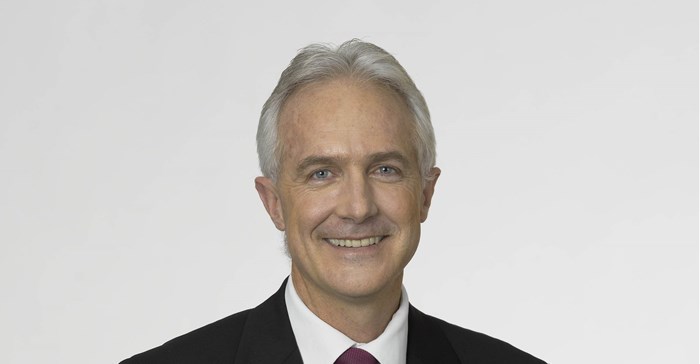South Africa's choices amidst fiscal consolidation failure

The result will be reflected in a likely main budget deficit of around 6.5% of GDP for 2019/20, followed by deficits of 6% of GDP or more over the next two years. At the same time, the government’s gross loan debt ratio, which has increased from 26% of GDP at the end of fiscal year 2008/09 to more than 60% of GDP currently, is expected to continue climbing over the next few years.
Repaying state debt is becoming harder every year
Persistent sovereign debt rating downgrades, reflecting the deteriorating trend in government’s finances, have resulted in a relentless upward drift in the real interest rate paid on government debt in recent years. Accordingly, the share of government expenditure going to servicing its debt, which crimps the amount available for spending on services for citizens, has increased from less than 2.25% of GDP in 2008/09 (R54.3bn) to an estimated 4.0% of GDP (more than R200bn) in fiscal year 2019/20.
Incidentally, if Moody’s Investors Service downgrades South Africa to sub-investment grade, asset prices may experience weakness in the near term - the severity of which would greatly depend on the response from policymakers. But, by and large the damage has already been done, reflected not only in the government’s debt servicing burden, but also in high real borrowing costs across the economy for firms and households.
Government is yet to curb state spending
History shows successful fiscal consolidation is unlikely in the absence of expenditure restraint. But, total consolidated government spending has increased from 31.0% of GDP in 2010/11 to an estimated 35.7% of GDP in 2019/20. This reflects both an expanding set of expenditure demands and an inability to adjust the expenditure ceiling lower in response to South Africa’s slowest income growth since the global financial crisis.
To stabilise the debt ratio, given South Africa’s low trend real growth rate relative to the real interest rate paid on government debt, requires a government primary budget (revenue less non-interest spending) surplus in excess of 1% of GDP. That is a large swing from the current deficit of 2.5% of GDP. But, as it stands, including support for Eskom, the primary budget balance is likely to remain in deficit for at least the next three years.
Both President Cyril Ramaphosa and the Minister of Finance, Tito Mboweni, have stressed the need for expenditure restraint.
Taxes will need to be increased, but the scope is limited
A VAT rate hike would net the fiscus close to R25bn for a 1% increase. However, considering the likely backlash in the event of a VAT rate hike, given its perceived regressive nature, revenue raising measures are more likely to focus on taxing income and wealth. One option is to not compensate for fiscal drag. But, other targets (over and above the usual excise duty increases) include dividends tax, capital gains tax and wealth taxes.
However, given the recession-like state of the economy, tax raising measures should be limited, especially taxes on income and wealth which reduce the incentive to work and save.
And, short of far-reaching measures such as a government worker wage freeze in fiscal year 2021/22, after the current multi-year wage agreement expires, it is doubtful expenditure can be trimmed sufficiently over the medium term to bring it in line with the available resources. Accordingly, the government’s gross loan debt ratio is expected to continue climbing to more than 70% of GDP over the next three years, implying a further increase in its debt servicing cost to more than 4.5% of GDP (R300bn) by 2023.
Years of fiscal consolidation have failed and, looking ahead, merely doing more of the same won’t cut it. Mboweni has indicated that we can’t go on like this.
To steer fiscal policy back onto the right track requires three things
- Expenditure should be cut relative to GDP. To the extent the government’s expenditure level is maintained it should reflect a marked swing towards capital expenditure away from consumption.
- It should be accepted that although fiscal policy is very much about the central government’s budget deficits and debt levels, there is real risk in building up contingent liabilities off balance sheet. True, as argued, the underlying problem has been an inability to keep expenditure in line with available resources. However, persistent bail-outs of state owned enterprises, in addition to the contingent liabilities inherent in the Road Accident Fund, unpaid bills at provincial level and claims for medical malpractice by the state, have now collectively also emerged as a real threat to fiscal sustainability.
- Since there are limits to which expenditure can be cut considering South Africa’s 29% unemployment rate, we should recognise the only real workable solution is to grow the economy faster, in addition to returning state-owned enterprises to operational and financial stability. This is a separate topic in its own right. But, it is worth noting that the idea that both the public sector and the private sector can increase spending at the same time, in the absence of increased foreign capital inflows (unlikely amidst persistent sovereign debt rating downgrades) will probably lead to disappointment. After all, the track record of recent years has shown persistently high levels of government spending absorb a large share of available resources, while placing upward pressure on real interest rates and effectively crowding out the private sector.
In this sense, Budget 2020 is not just about the numbers, but also the ability of government to communicate a clear strategy that credibly maps a path to a well-functioning economy, without which much needed improved levels of service delivery are not plausible. Absent this, a likely Moody’s downgrade would merely be another signpost of an ongoing descent.





































